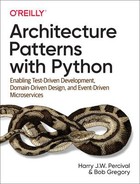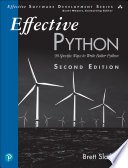Python developers have long endured the frustrations of slow package installations, complex virtual environment management, and fragmented tooling. Enter UV—a revolutionary package manager that promises to solve these pain points with blazing-fast performance and unified tooling. But is it ready to replace your trusted pip and virtualenv setup?
Developed in 2024 and written in Rust, UV has quickly gained momentum in the Python community by delivering 10-100x faster dependency resolution and installation compared to traditional tools. As we navigate 2025, the question isn't whether UV is impressive—it's whether you should make the leap.
What Makes UV Different: The Rust Advantage
At its core, UV's performance revolution stems from its Rust implementation. While traditional tools like pip are written in Python, UV leverages Rust's systems programming capabilities to optimize the most computationally intensive aspects of package management.
This architectural choice enables UV to handle complex dependency graphs that would bring pip to a crawl. When installing packages like FastAPI with its numerous dependencies, developers report installation times dropping from minutes to seconds.
Core Features That Transform Your Workflow
Unified Python Version Management
One of UV's standout features is its seamless Python version management. No longer do you need separate tools like pyenv:
# Switch Python versions effortlessly
uv use python3.10
uv use python3.13
# UV automatically handles version installation if needed
Intelligent Dependency Resolution
UV employs sophisticated resolution strategies, including "bottom pinning"—a technique that locks dependencies to specific versions to prevent conflicts:
# Traditional approach might install Django>=4.0
# UV's bottom pinning locks to Django==4.2.7
uv add django
This approach significantly reduces the dreaded "dependency hell" that plagues complex Python projects.
Drop-in Compatibility
Migration anxiety? UV addresses this by maintaining compatibility with existing Python packaging standards:
- Supports
requirements.txtfiles - Works with
pyproject.tomlconfigurations - Integrates with PEP 621 standards
- Provides familiar commands like
uv pip install
Real-World Performance: The Numbers Don't Lie
Consider a typical data science project with dependencies like pandas, numpy, scikit-learn, and matplotlib. Traditional pip installations might take 3-5 minutes, especially in CI/CD environments. UV reduces this to 15-30 seconds—a game-changing improvement for development velocity.
These performance gains compound in automated environments where packages are installed repeatedly across multiple builds and deployments.
Migration Strategy: Should You Make the Switch?
When UV Makes Sense
Large-scale projects: If you're managing applications with extensive dependency trees, UV's performance benefits become immediately apparent.
CI/CD-heavy workflows: Teams running frequent automated builds will see significant time savings.
Multi-environment development: Projects requiring frequent Python version switching benefit from UV's integrated version management.
When to Exercise Caution
Non-Python dependencies: UV focuses exclusively on Python packages. Projects requiring system-level dependencies (like those managed by Conda) may need hybrid approaches.
Legacy constraints: Organizations with strict tooling requirements may need to evaluate UV's ecosystem maturity against established alternatives.
Learning curve considerations: Teams with limited bandwidth for tool migration should weigh the performance benefits against retraining costs.
Practical Migration Path
For teams considering adoption, a gradual migration approach minimizes risk:
Phase 1: Parallel Evaluation
# Install UV alongside existing tools
curl -LsSf https://astral.sh/uv/install.sh | sh
# Test on non-critical projects
uv init test-project
cd test-project
uv add fastapi uvicorn
Phase 2: CI/CD Integration
# GitHub Actions example
- name: Set up UV
uses: astral-sh/setup-uv@v1
- name: Install dependencies
run: uv sync
Phase 3: Full Migration
Once comfortable, teams can transition core projects while maintaining fallback capabilities.
The Competitive Landscape
UV enters a crowded field but addresses specific pain points:
| Tool | Primary Strength | UV Advantage | |------|------------------|---------------| | pip + virtualenv | Universal compatibility | 10-100x faster performance | | Conda | Non-Python package support | Lighter weight, Python-focused | | Poetry | Dependency management | Rust-powered speed | | Pipenv | Simplified workflows | Better caching, version management |
Future-Proofing Your Development Stack
UV represents a broader trend toward Rust-powered Python tooling. Tools like Ruff (linting) and Pydantic (data validation) have demonstrated that Rust implementations can dramatically improve Python developer experience without sacrificing compatibility.
The package manager space is evolving rapidly, with UV leading innovations in: - Cross-platform dependency resolution - Advanced caching strategies - Integrated Python version management - Enterprise-grade reproducibility features
Making the Decision: A Framework for Evaluation
Before migrating, consider these factors:
- Performance requirements: Do slow package installations impact your team's productivity?
- Project complexity: Are you managing multiple Python versions or large dependency sets?
- Risk tolerance: Can your team handle potential edge cases in a newer tool?
- Long-term strategy: Does UV align with your organization's tooling philosophy?
Conclusion: The Future is Fast
UV represents more than just another package manager—it's a glimpse into the future of Python tooling. By leveraging Rust's performance characteristics while maintaining Python ecosystem compatibility, UV addresses real pain points that have plagued developers for years.
The question isn't whether UV will become mainstream—early adoption patterns and performance benchmarks suggest it's already on that path. The question is whether your team will benefit from early adoption or should wait for further ecosystem maturation.
For teams struggling with slow CI/CD pipelines, complex dependency management, or frequent environment switching, UV offers compelling solutions today. For others, monitoring UV's development while maintaining current tooling may be the prudent approach.
As Python continues its evolution toward faster, more efficient tooling, UV stands as a testament to the power of thoughtful reimplementation. Whether you migrate today or tomorrow, understanding UV's capabilities ensures you're prepared for the next phase of Python development.














